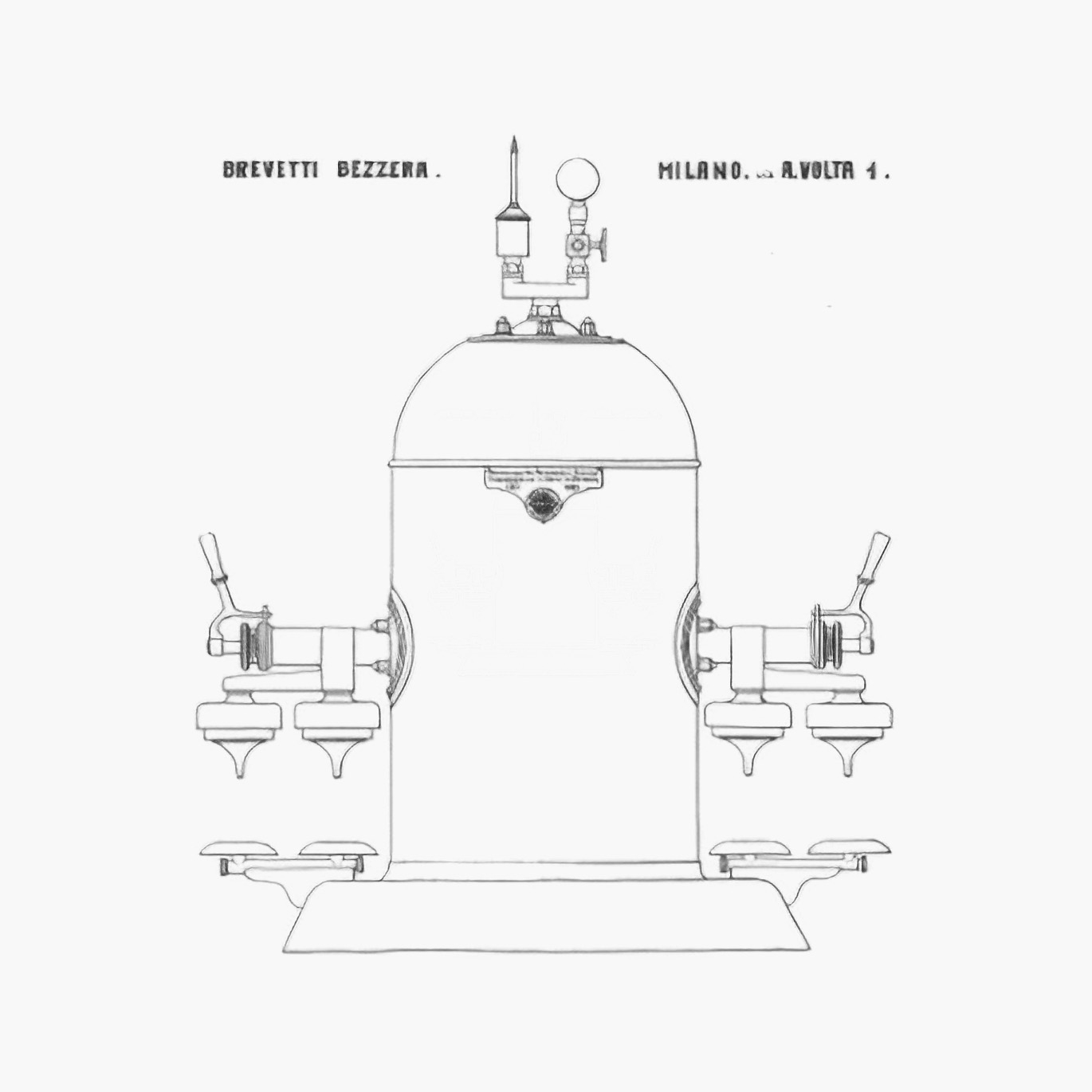Bezzera
As Italy entered the twentieth century, a simple yet revolutionary adaptation of Moriondo’s design would give rise to what is widely considered to be the first espresso machine. Luigi Bezzera was a mechanic based in Milan. He began applying for patents from June 1901 titled ‘Innovations in the machinery to prepare and immediately serve coffee beverages’ (Patent No. 153/94, 61707, granted on June 5, 1902).
 An illustration from Bezzera’s first patent
An illustration from Bezzera’s first patent
Bezzera’s first machine design which he called the Gigante was unsurprisingly, an enormous machine with two arms protruding from either side of an upright boiler. It was available in a range of boiler sizes with anything up to 6 groups (Delprat 2018). The single-serve portafilters attached to the group head with a bayonet fitting, exactly the way portafilters attach to almost every modern espresso machine. They had three positions: off, water, and steam, which helped improve efficiency (Bersten 1993). Bezzera’s brew-to-order approach using portafilters, allowed for greatly improved access for cleaning and helped to ensure that coffee could finally be made to order ‘expressly’ for each individual customer. In other respects, Bezzera’s machine performed almost exactly the same as Moriondo’s.
Pavoni
Within a year of securing his patent, Bezzera established a business relationship with Desiderio Pavoni, a family friend. By 1902, Pavoni had purchased Bezzera’s patent for a sum rumoured to be approximately 10,000 lira (equivalent to ~US$105,000 in today’s money). Bezzera and Pavoni seem to have agreed that both of their companies could continue to build their own versions of more or less the same design.
Although the precise details of their working relationship are unknown, at the 1906 Milan Fair a machine called the Ideale, bearing a Pavoni badge, was exhibited on a stand bearing Bezzera’s name (Bersten 1993). The Ideale was to become the first widely available, commercially successful, large-scale, pressurised coffee machine.
